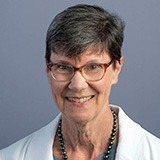Helene M. Langevin, M.D.
NIH/NIDCR
Lab: Building 30, Room 532
NCCIH Office: Building 31, Room 2B11
Bethesda, MD 20892
United States
Dr. Langevin is interested in exploring how to keep connective tissue flexible and free from pain, slow aging, and increase the health of the whole body. One limitation of conventional medicine is its fragmentation of the body into separate systems and body parts. Connective tissue is a body-wide network that connects all its systems and parts, making it important for the integrated functioning of the whole body. Dr. Langevin’s previous work has focused on the role of connective tissue in chronic pain and the mechanisms of acupuncture, manual, and movement-based therapies. Her goal at NIDCR is to understand how mechanical forces may help connective tissue stay strong and flexible, allow for successful healing after injury, reduce inflammation, and prevent cancer.
Biographical Sketch
Dr. Helene Langevin holds an M.D. degree from McGill University, Montreal. She completed a postdoctoral research fellowship in neurochemistry at the MRC Neurochemical Pharmacology Unit in Cambridge, England, and a residency in internal medicine and fellowship in endocrinology and metabolism at The Johns Hopkins Hospital, Baltimore.
In November 2018, Dr. Langevin was sworn in as director of the National Center for Complementary and Integrative Health (NCCIH). Prior to her arrival, she was director of the Osher Center for Integrative Medicine, jointly based at Brigham and Women's Hospital and Harvard Medical School, Boston, and professor in residence of medicine at Harvard Medical School. She also was a visiting professor of neurological sciences at the University of Vermont Larner College of Medicine, Burlington.
- Berrueta L, Bergholz J, Munoz D, Muskaj I, Badger JG, Shukla A, Kim HJ, Zhao J, Langevin HM. Stretching reduces tumor growth in mouse breast cancer model. Sci Rep. 2018 Nov 16;8(1):7864. doi: 10.1038/s41598-018-35364-w.
- Berrueta L, Muskaj I, Olenich S, Butler, T, Badger JG, Colas R, Spite M, Serhan CN, Langevin HM. Stretching impacts inflammation resolution in connective tissue. J Cell Physiol. 2016 Jul;231(7):1621-7. doi: 10.1002/jcp.25263. Epub 2015 Dec 10.
- Corey SM, Vizzard MA, Bouffard NA, Badger GJ, Langevin HM. Stretching of the back improves gait, mechanical sensitivity and connective tissue inflammation in a rodent model. PLoS One. 2012;7(1):e29831. doi: 10.1371/journal.pone.0029831. Epub 2012 Jan 6.
- Langevin HM, Fox JR, Koptiuch C, Badger GJ, Greenan-Naumann AC, Bouffard NA, Konofagou EE, Lee WN, Triano JJ, Henry SM. Reduced thoracolumbar fascia shear strain in human chronic low back pain. BMC Musculoskelet Disord. 2011 Sep 19;12:203. doi: 10.1002/jcp.20623.
- Langevin HM, Stevens-Tuttle D, Fox JR, Badger GJ, Bouffard NA, Krag MH, Wu J, Henry SM. Ultrasound evidence of altered lumbar connective tissue structure in human subjects with chronic low back pain. BMC Musculoskelet Disord. 2009 Dec 3;10:151. doi: 10.1186/1471-2474-10-151.
- Langevin HM, Bouffard NA, Badger GJ, Churchill DL, Howe AK. Subcutaneous tissue fibroblast cytoskeletal remodeling induced by acupuncture: Evidence for a mechanotransduction-based mechanism. J Cell Physiol. 2006;207(3):767-74. doi: 10.1002/jcp.20623.
- Langevin HM, Bouffard NA, Badger GJ, Iatridis JC, Howe AK. Dynamic fibroblast cytoskeletal response to subcutaneous tissue stretch ex vivo and in vivo. Am J Physiol Cell Physiol. 2005;288(3):C747-56. doi: 10.1152/ajpcell.00420.2004. Epub 2004 Oct 20.
- Langevin HM, Churchill DL, Fox JR, Badger GJ, Garra BS, Krag MH. Biomechanical response to acupuncture needling in humans. J Appl Physiol. 2001 Dec;91(6):2471-8. doi: 10.1152/jappl.2001.91.6.2471.
- Langevin HM, Churchill DL, Cipolla MJ. Mechanical signaling through connective tissue: A mechanism for the therapeutic effect of acupuncture. FASEB J. 2001 Oct;15(12):2275-82. doi: 10.1096/fj.01-0015hyp.

